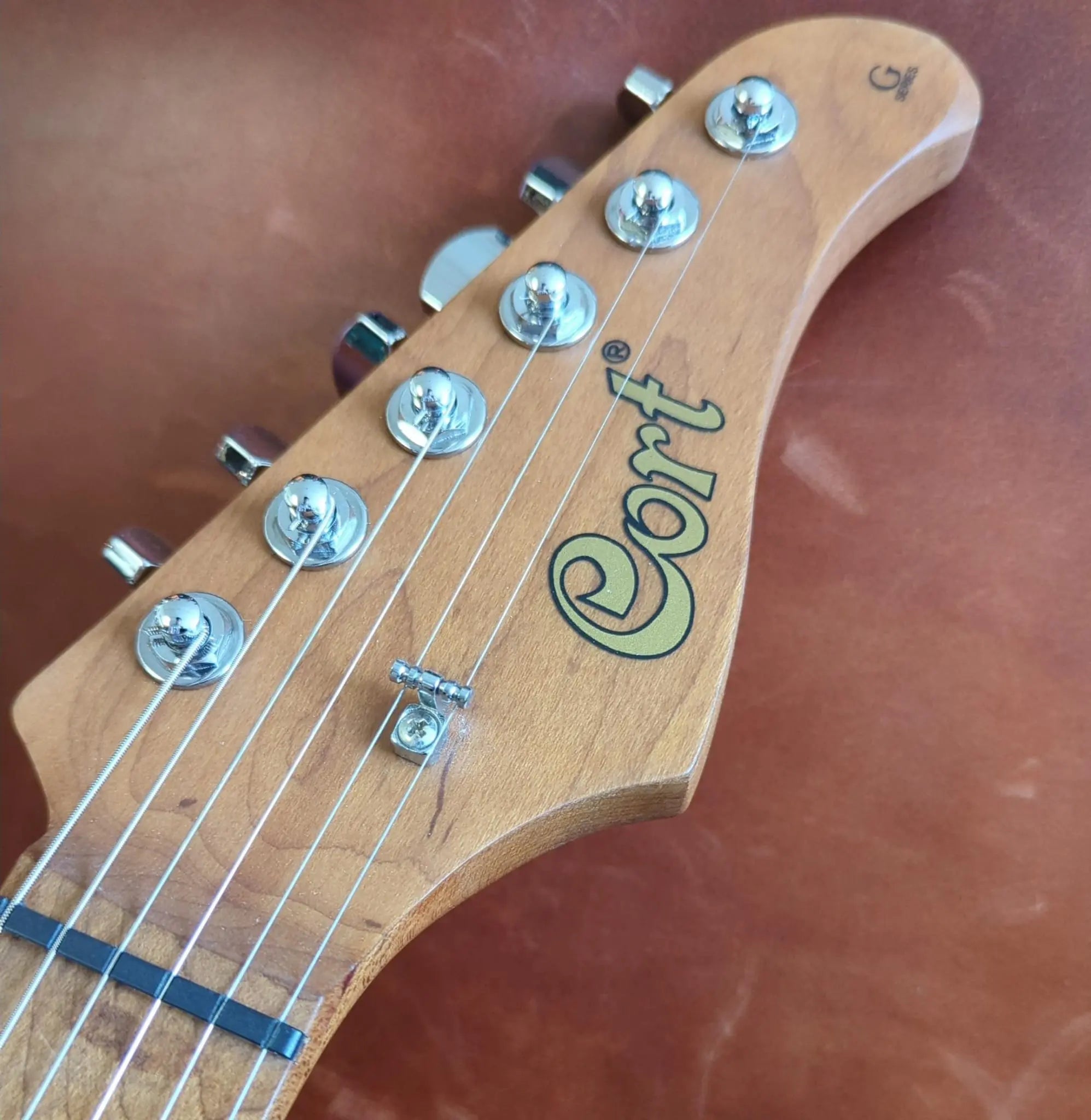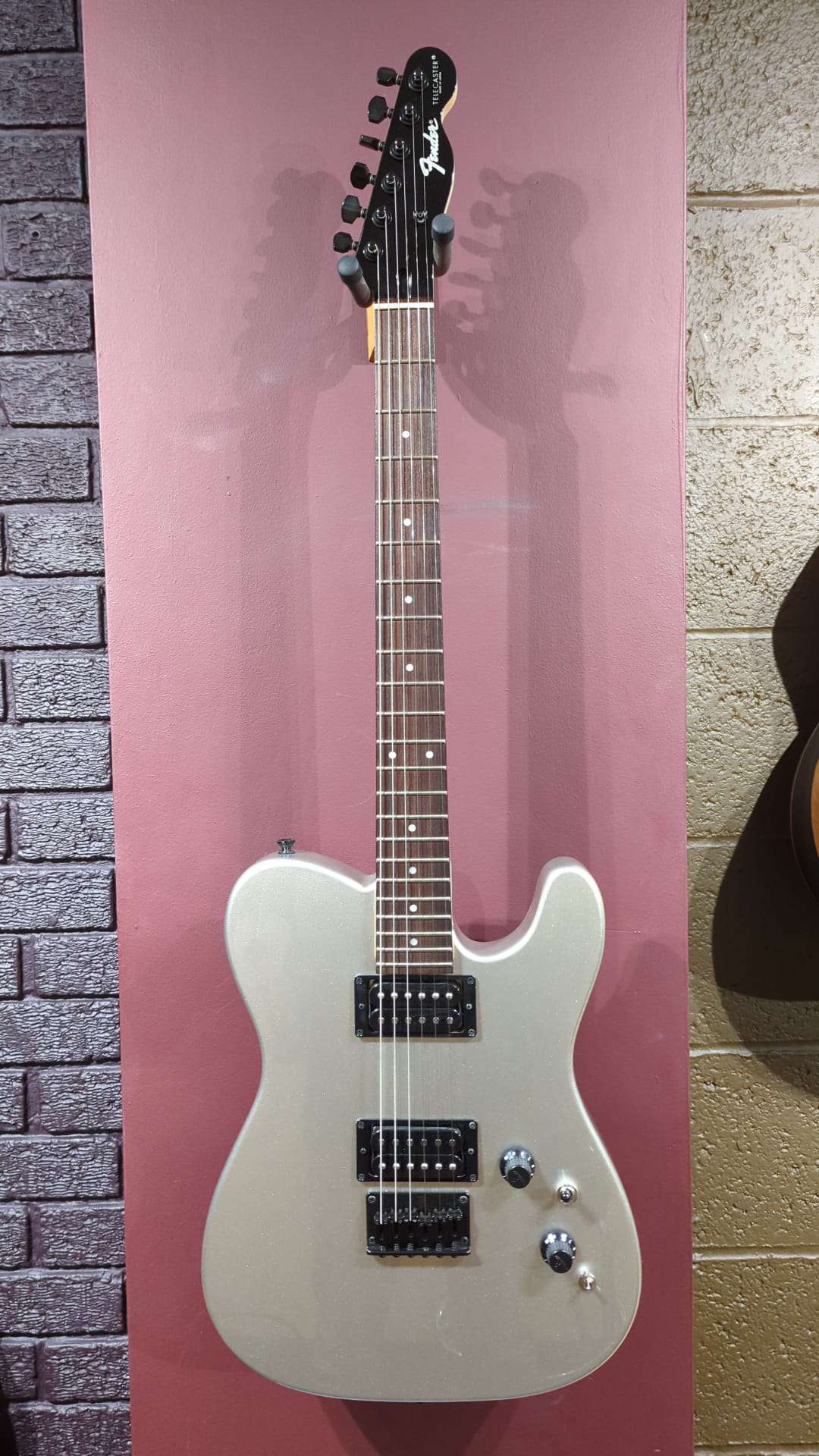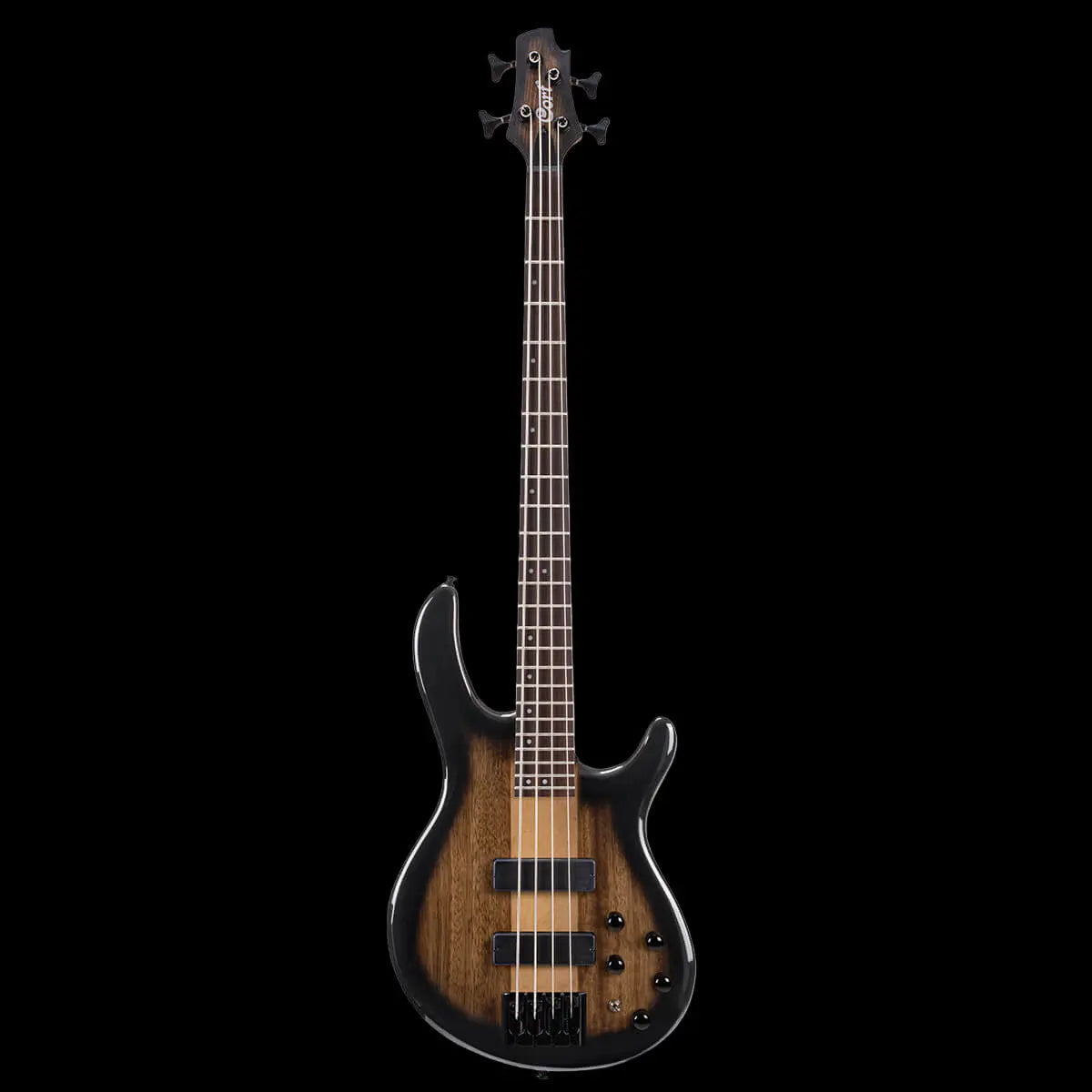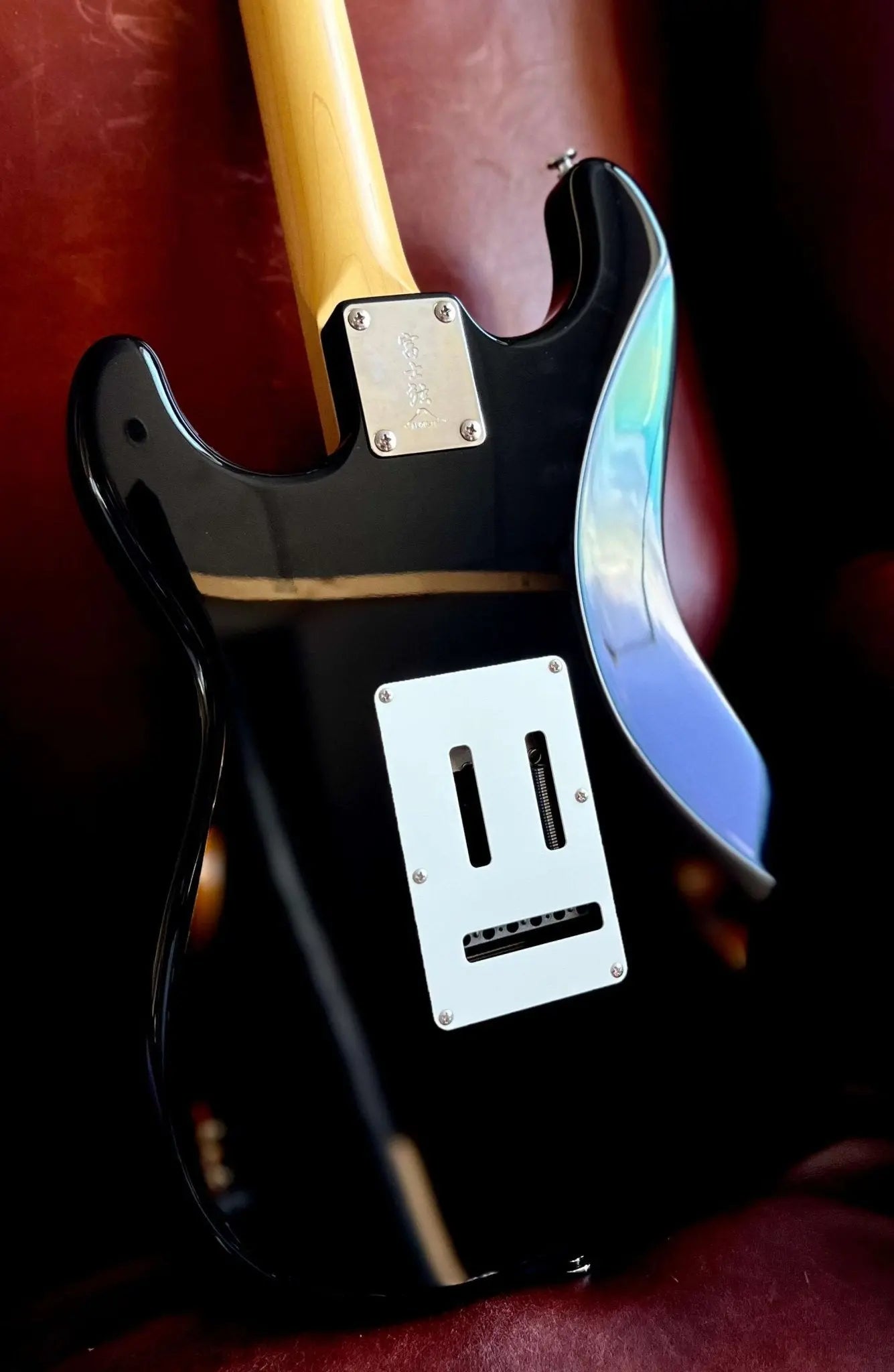Sitka Spruce Vs Swiss Moon Spruce. What Is The Difference? Which Should I Buy?
Swiss Moon Spruce. A luxurious, beautiful spruce from the Swiss Mountains - is the choice tone wood for luxury custom acoustic guitar builders such as Dowina in Slovakia.
Lets look at why.
The difference between Sitka spruce and Swiss moon spruce lies in their tonal properties, physical characteristics, and cultural perception. Both are excellent tonewoods for guitar tops, but they cater to different tonal and aesthetic preferences.
1. Sitka Spruce
- Origin: Commonly sourced from the Pacific Northwest of North America.
-
Density and Stiffness:
- Dense and stiff, making it strong and durable.
- Often heavier than Swiss moon spruce.
-
Tonality:
- Bright and Powerful: Produces a clear, articulate tone with excellent projection.
- Dynamic Range: Handles both soft fingerpicking and aggressive strumming with ease.
- Focus: Strong in the midrange and treble, with tight lows.
-
Break-in Period:
- Takes time to "open up" and reach its full tonal potential, but offers longevity and consistency over decades.
- Versatility: Ideal for a wide range of playing styles and genres, from bluegrass to rock.
2. Swiss Moon Spruce
- Origin: Grown in the high-altitude Alpine regions of Switzerland, Austria, and Germany, often harvested during specific lunar phases ("moon wood"), believed to improve its stability and resonance.
-
Density and Stiffness:
- Slightly less dense and lighter than Sitka spruce, making it more responsive.
- High stiffness-to-weight ratio contributes to excellent resonance.
-
Tonality:
- Rich and Complex: Produces a warmer, sweeter, and more refined tone compared to Sitka.
- Overtones: More complex harmonic content, with a shimmering, bell-like quality.
- Balance: Smooth and even across the tonal spectrum, with a natural warmth in the mids.
-
Break-in Period:
- Opens up more quickly than Sitka spruce, providing a "played-in" tone sooner.
-
Perception and Aesthetics:
- Valued for its rarity and cultural significance in fine instrument making.
- Often associated with high-end luthier-crafted guitars due to its reputation for exceptional tonal and visual quality.
Comparison Table
| Feature | Sitka Spruce | Swiss Moon Spruce |
|---|---|---|
| Brightness | Bright, articulate | Warm, refined |
| Projection | Strong and powerful | Moderate but highly resonant |
| Overtones | Subtle | Complex and rich |
| Responsiveness | Handles aggressive playing | Highly responsive to light touch |
| Dynamics | Wide range | Balanced and nuanced |
| Break-in Period | Longer | Shorter |
| Weight/Density | Heavier | Lighter and more resonant |
| Aesthetic Appeal | Functional and common | Rare, with cultural prestige |
Which to Choose?
-
Sitka Spruce:
- Best for players who need versatility, projection, and durability.
- Great for strumming, flatpicking, and loud playing styles.
-
Swiss Moon Spruce:
- Ideal for fingerstyle players or those seeking a nuanced, refined, and rich tonal palette.
- Suited for high-end or custom guitars where tonal subtlety and exclusivity are desired.
In summary - Sitka is popular and does the job whilst Swiss moon spruce offers an air of luxury and tonal sophistication. Think of Sitka spruce as a robust, versatile workhorse and Moon Spruce as an added layer of sophistication for the player who appreciates its additional tonal qualities.




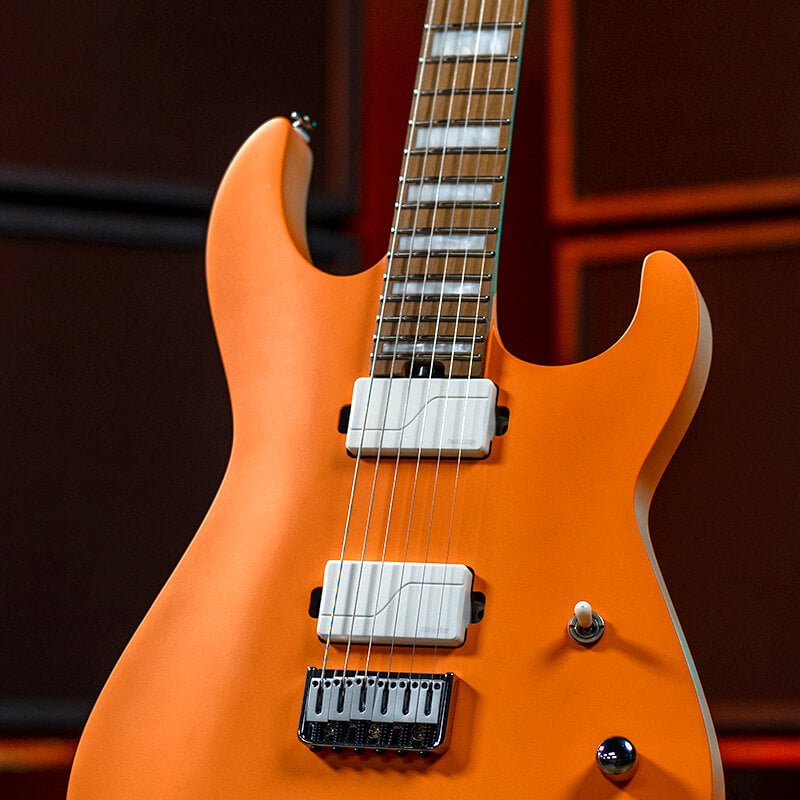














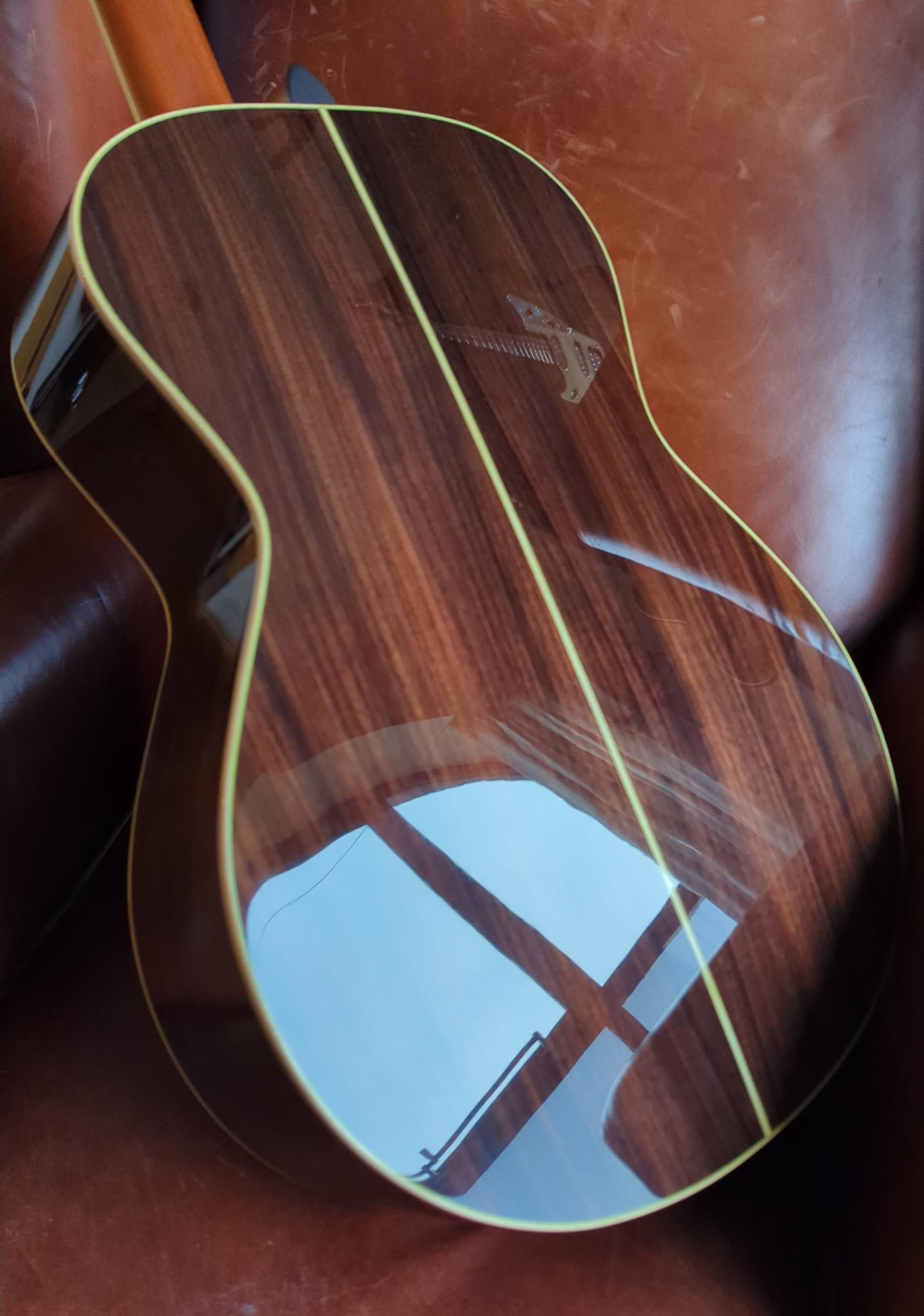


![Gordon Smith GS2 Deluxe Export 2019 [used] A1 Condition - Richards Guitars Of Stratford Upon Avon](http://rguitars.co.uk/cdn/shop/files/gordon-smith-gs2-deluxe-export-2019-used-a1-condition-4323398.jpg?v=1766153718&width=1072)
![Gordon Smith GS2 Deluxe Export 2019 [used] A1 Condition - Richards Guitars Of Stratford Upon Avon](http://rguitars.co.uk/cdn/shop/files/gordon-smith-gs2-deluxe-export-2019-used-a1-condition-9502671.jpg?v=1766153718&width=899)


![G&L USA Made ASAT - late 80s/early 90s [Used] - Richards Guitars Of Stratford Upon Avon](http://rguitars.co.uk/cdn/shop/files/gl-usa-made-asat-late-80searly-90s-used-1091932.jpg?v=1761670676&width=1378)
![G&L USA Made ASAT - late 80s/early 90s [Used] - Richards Guitars Of Stratford Upon Avon](http://rguitars.co.uk/cdn/shop/files/gl-usa-made-asat-late-80searly-90s-used-7964817.jpg?v=1761670677&width=1828)
![Eastman AC630 - SB [Used] - Richards Guitars Of Stratford Upon Avon](http://rguitars.co.uk/cdn/shop/files/eastman-ac630-sb-used-5743157.jpg?v=1760421581&width=1080)
![Eastman AC630 - SB [Used] - Richards Guitars Of Stratford Upon Avon](http://rguitars.co.uk/cdn/shop/files/eastman-ac630-sb-used-2967411.jpg?v=1760421593&width=1569)
![Fender American Standard Telecaster 2012 - Natural [Used] guitar for sale uk](http://rguitars.co.uk/cdn/shop/files/fender-american-standard-telecaster-2012-natural-used-4379607.jpg?v=1760421498&width=1614)
![Fender American Standard Telecaster 2012 - Natural [Used] guitar for sale uk](http://rguitars.co.uk/cdn/shop/files/fender-american-standard-telecaster-2012-natural-used-1429240.jpg?v=1760421497&width=1512)
![Fender American Professional II Jazzmaster - Dark Night [Used] guitar for sale uk](http://rguitars.co.uk/cdn/shop/files/fender-american-professional-ii-jazzmaster-dark-night-used-6840250.jpg?v=1760421430&width=1602)
![Fender American Professional II Jazzmaster - Dark Night [Used] guitar for sale uk](http://rguitars.co.uk/cdn/shop/files/fender-american-professional-ii-jazzmaster-dark-night-used-4375294.jpg?v=1760421432&width=1476)
![Guild Brian May "Red Special" Limited Edition - early 90s - One of 1000 [Used] guitar for sale uk](http://rguitars.co.uk/cdn/shop/files/guild-brian-may-red-special-limited-edition-early-90s-one-of-1000-used-6139630.jpg?v=1760421357&width=1492)
![Guild Brian May "Red Special" Limited Edition - early 90s - One of 1000 [Used] guitar for sale uk](http://rguitars.co.uk/cdn/shop/files/guild-brian-may-red-special-limited-edition-early-90s-one-of-1000-used-9797150.jpg?v=1760421365&width=1644)







